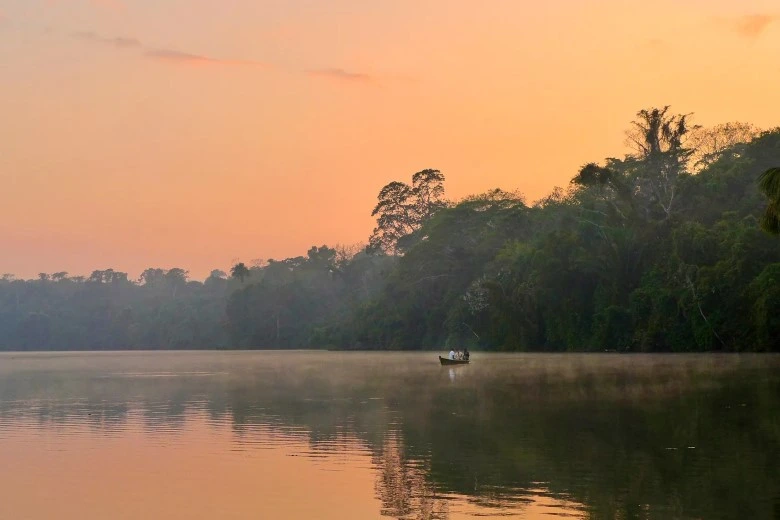Visiting the Tambopata National Reserve in March is an unforgettable experience in the Peruvian Amazon. Although it is the rainy season, the heavy rains cause the Madre de Dios and Tambopata rivers to swell, creating spectacular landscapes full of wildlife. At the same time, there are very few tourists in March, making jungle walks much more peaceful. This makes March an ideal month for a photography tour in the Tambopata National Reserve, as the vegetation is lush and the wildlife is very active.
Advantages of visiting the Tambopata National Reserve in March
- Green and vibrant rainforest: The abundant rains make the rainforest very green and dense, perfect for nature photography. Additionally, this humid climate promotes the reproduction of many animals. For example, macaws and parrots nest and gather at the clay walls, where they are easier to spot and photograph.
- Birdwatching: March is one of the best months to see birds in the Amazon. Macaws, toucans, parrots, and kingfishers are very active, and their colors stand out even more in the soft jungle light. It is a great opportunity for bird photography enthusiasts.
- Fewer tourists: Since it is the rainy season, there are fewer visitors in Tambopata. This allows you to enjoy more tranquility on the trails, better photo angles, and fewer people at observation points. Places like Collpa Chuncho or Lake Sandoval can often be explored almost alone.
- Weather: The rains help cool the environment, so temperatures are slightly lower than during the dry season. Mornings are usually cool, and most rains fall in the afternoon, allowing you to hike the jungle with less heat.
- High rivers and access to remote areas: The rains cause the rivers to rise, making boat transportation easier. This allows you to explore channels and lagoons that are inaccessible during the dry season. In March, for example, you can canoe down the Tambopata River and reach Lake Yacumama or deeper jungle areas.

Disadvantages of visiting the Tambopata National Reserve in March
- Heavy rains and muddy trails: March is a very rainy month, with an average of about 354 mm of rainfall. Frequent rains turn trails into muddy and slippery paths. This can make hiking challenging, especially if you don’t bring proper boots.
- Mosquitoes and insects: The high humidity and standing water increase the presence of insects. You must protect yourself well with repellent and appropriate clothing, as there will be many mosquitoes and other bugs during this time.
- Slow ground transportation: Rains can flood roads and paths to Puerto Maldonado. Bus and car transfers may experience delays. It is advisable to leave plenty of time to travel from the city to the reserve.
- Unpredictable weather: Although it usually rains in the afternoon, some days bring unexpected storms. You must be flexible with your itinerary, as some outdoor activities may be delayed or rescheduled due to sudden downpours.
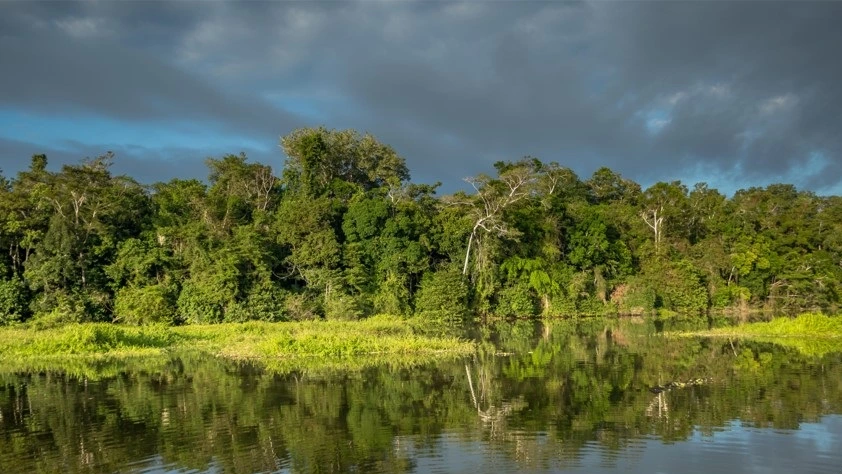
Activities in the Tambopata National Reserve in March
In March, it is still possible to enjoy a wide variety of activities in Tambopata, ideal for photographers and nature lovers:
- Canoeing: Boat rides on the Madre de Dios River and the Tambopata River for wildlife and flora observation.
- Night wildlife watching: Boat rides and night walks to spot caimans, owls, sloths, insects, opossums, and more.
- Monkey watching: Visit to Monkey Island.
- Guided jungle walks: Hiking tours in the tropical rainforest to identify medicinal plants and ancient trees.
- Exploration of Lake Sandoval: Hiking and rowing boat tours on Lake Sandoval to observe black caimans, giant otters, herons, turtles, monkeys, macaws, and wild ducks.
- Observing parrot and macaw nests: Visit to the “La Cachuela” clay lick and Collpa Chuncho, the largest clay lick in the world, to see parrots, macaws, and parakeets feeding on mineral-rich clay.
- Birdwatching at dawn: Early morning boat rides and walks to spot birds such as macaws, toucans, hummingbirds, and woodpeckers on cliffs, clay licks, and riverbanks.
- Cultural visit to a Matsigenka family: Interaction with a native Matsigenka family to learn about their traditions, hunting techniques, cotton spinning, clothing making, fire lighting with natural materials, and crafting utensils.
- Canopy wildlife observation: Walks on hanging bridges between treetops to observe canopy wildlife such as toucans, monkeys, hummingbirds, orchids, and reptiles.
- Birdwatching tower: Climb a birdwatching tower for spotting exotic species from above the forest.
- Lake Yacumama: Boat ride to observe macaws, parrots, parakeets, black caimans, herons, cormorants, and river otters.
- Mammal watching: River navigation to spot capybaras, tapirs, jaguars, anacondas, peccaries, and wild cats.
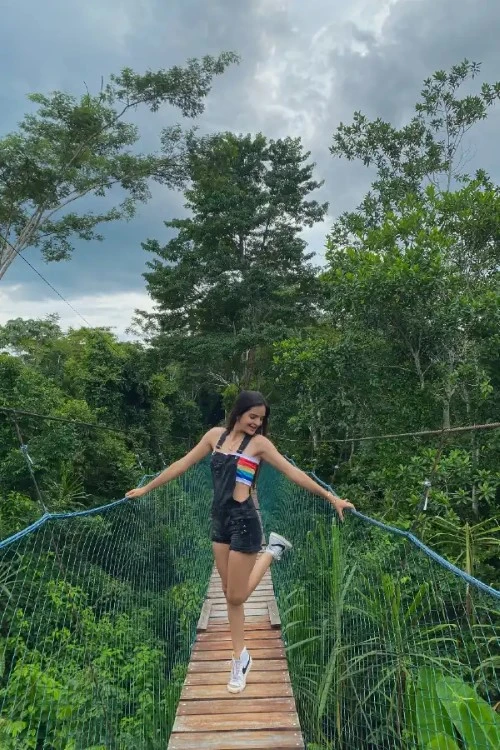
Weather in the Tambopata National Reserve in March
The weather in March is typically warm and very humid:
- Temperature: between 20 °C (68 °F) minimum and 33 °C (91 °F) maximum, with an average of about 26 °C (79 °F).
- Precipitation: about 354 mm over the month.
- Rainy days: around 26 rainy days.
- Humidity: very high, around 89% on average.
- Sunlight hours: about 6–7 hours per day, especially in the mornings.
Despite the rain, sunny breaks allow for excursions. The abundant rainfall keeps the jungle fresh and with intensely green foliage, ideal for nature photography.

Tips for traveling to the Tambopata National Reserve in March
- Proper gear: Bring light, quick-drying clothing, a high-quality rain jacket or poncho, and waterproof boots.
- Sun and insect protection: Use sunscreen, hat or cap, and strong insect repellent.
- Photography equipment: Bring a camera with a telephoto lens, a lightweight tripod, and waterproof covers. Don’t forget extra batteries.
- Health: Yellow fever vaccine recommended. Consult about malaria prophylaxis.
- Documents and cash: Bring a copy of your passport and cash in soles.
- Reliable agency: Book tours with local guides. We recommend Peru Jungle Trips, an agency specializing in ecotourism and photography.
- Physical preparation: Be in good physical condition for long hikes and humid conditions.
- Advance reservations: Although it is low season, lodges have limited capacity.
Frequently asked questions about the Tambopata National Reserve in March
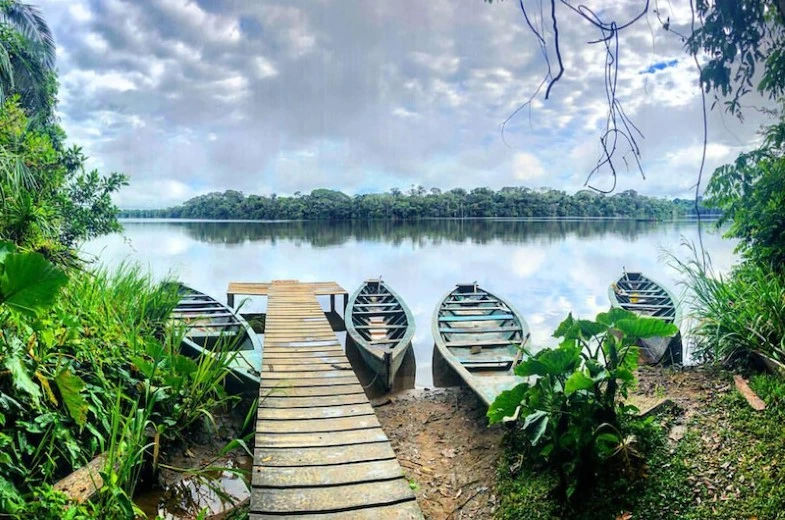
1. Is it recommended to visit Tambopata National Reserve in March?
Yes. Although it is the rainy season, March offers a vibrant rainforest, with lush vegetation, active wildlife, and few tourists. With the right equipment, it is an excellent time for a photography tour and for enjoying a more authentic and peaceful experience, away from the mass tourism that characterizes other seasons.
2. What makes Tambopata special during the rainy season?
The Tambopata National Reserve in March is full of life. The rainforest becomes denser, and macaws and parrots visit the clay licks. It is also butterfly season, with tropical insects and Amazonian flowers in bloom. In addition, the swollen rivers allow you to explore new areas by boat. Ideal for photographers and nature lovers seeking unique images.
3. How does the rain affect activities in Tambopata in March?
Rain usually falls in the afternoon or at night. Tours adapt to the weather and are scheduled for clear mornings or intervals without prolonged rain. It is essential to be flexible with the itinerary and wear appropriate clothing, as the rain makes the rainforest fresher and greener, enriching the visual and sensory experience.
4. What activities should I do in Tambopata National Reserve in March?
Some of the most recommended activities include:
- Specialized photography tour
- Visit to the macaw clay licks
- Excursion to Lake Sandoval
- Guided night walks
- Canopy circuit and hanging bridges
- Canoe rides through the lagoons
- Walks to ancient trees
5. What should I bring to Tambopata National Reserve in March?
Essential items:
- High-quality rain jacket and rubber boots
- Quick-drying clothing
- Sunscreen and repellent
- Protected camera and extra batteries
- Headlamp and binoculars
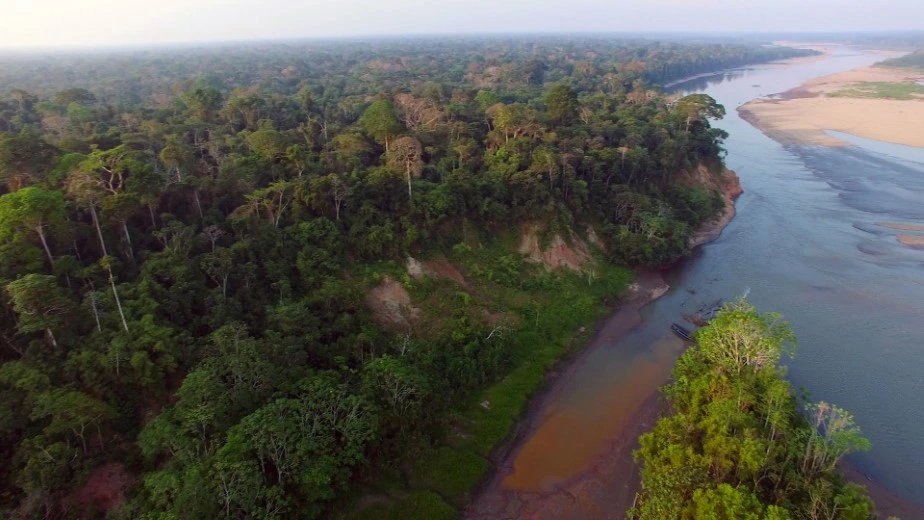
The Tambopata National Reserve in March offers the Peruvian Amazon unique settings for photography, wildlife observation, and a deep connection with nature. During this month, the rainforest is at its peak, the swollen rivers allow exploration of remote areas, and the wildlife is especially active. If you want to explore it in a safe and authentic way, book your tour with Peru Jungle Trips, local experts in ecotourism and wildlife photography, who will guide you to make the most of this unique experience.
Tours to Tambopata National Reserve
- Lake Sandoval (2 Days)
- Tambopata Jungle Tour (3 Days)
- Sandoval Lake + Parrot clay lick + Native Community (4 days)
- Collpa Chuncho Macaw Clay Lick + Sandoval Lake & Yacumama Lake (4 Days)
Related Articles about Tambopata National Reserve
- Tambopata National Reserve in February: Advantages and Disadvantages
- Tambopata National Reserve in April: Climate, Pros and Cons

